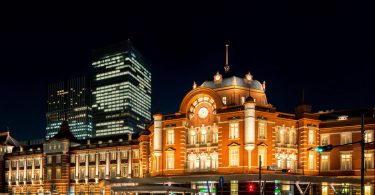Edward Hopper, Hotel Room, 1931
A hotel room can be a very lonely place if the interior design, including the furniture, fixtures, walls/floor coverings, and window treatments are less than wonderful. All too frequently it is depressing to check-in to a hotel, pass through the registration process, scan the keycard to open to the door, and greeted with smells that let me know that the room has not been refurbished in over 10 years, or the air conditioning has not worked all week, or the hotel is pet friendly but that does not mean the carpet has been recently cleaned or the kitty litter removed.
Guests Decide
Travelers have accommodation options: they can make reservations for an apartment rental, select a budget, mid-range or luxury hotel room or suite; select a branded or boutique property. Desirable resort properties can be located on hilltops, beachside, lakeside, or even in a forest, hanging from a tree limb.
As the competition increases, hoteliers are giving renewed attention to the interiors of their hotel rooms, updating and reshaping the look, feel and appeal, based on the profile of the guest and the location/locale of the property.
Public space(s) that had been non-revenue zones (i.e. lobbies, business centers) have been put on the dissecting table, and designers, managers and investors are reconsidering the real purpose of these spaces, trying to determine how they can generate a cash-flow while also be eco-conscious, relatable to the location, comfortable and efficient and priced at a point that meets the budget constraints of the guest.
Experiential
The new focus on the guest experience is placing the architect and interior designer, front and center of the hotel design team as they begin to recognize and acknowledge the importance of interior design in meeting the comfort, emotional, psychological and business needs of the guest.
From an error-free reservation system through the check-in process, the entire experience must be seamless. Waiting in lines for check-in has never a good idea; not only does it show a disrespect for guests and the value of their time, it is also a visible display of poor time-management skills. In addition, it gives the guest time to review every aspect of the lobby and staff. What do they see? Everything – from soiled carpets and furniture to chips in the paint on the walls. They notice frayed and un-pressed employee uniforms, poor air quality (or too hot/cold), and the absence of 21st century technology that would increase the speed of registration.
With a recognition that the physical and mental health of the guest should be the center of all discussion’s, hotel engineers focus on the mechanical, plumbing and air quality of the property, making sure that fresh air intake is pollution free, and clean air is integrated into the functionality of the property. Architects and interior designers further this effort by avoiding materials that emit toxic fumes and select paint and finishing materials that are consumer and eco-friendly.
Lighting
Good lighting is part of the guest-focused program. Public space and guest room lighting have moved beyond creating the “mood” and designers now consider the usage of the space to determine appropriate lighting and light sources, evaluating guest activities that include reading, computer and cellphone usage, small and large meetings, entertainment and dining venues – with different lights and lighting for each experience.
Think Local
Original works of art and sculpture have become an integral part of the hotel design, with local artists and artisans from the immediate community having their work included in the interiors and displayed as rotating exhibitions selected and managed by professional curators.
Some hoteliers are putting an emphasis on comfort, integrating residential elements into the designs that include a variety of color palettes that are becoming more playful and imaginative, blending the line that previously defined “hotel” and “home.”
Bathrooms
Bathroom design, and fixtures are incorporating art and industrial design. In many instances, the first zone used after entering the room – is the toilet and it is a bellwether as to the quality of the hotel and definitely an extension of its personality. Based on guest research, some hoteliers are changing out the flimsy, 100 percent rayon towels and replacing them with something that will actually absorb water. Hairdryers are getting more powerful, and Dollar store mirrors are being replaced with mirrors that are actually great for makeup applications because they are well lighted and moveable. One company even hired a makeup artist to help them make the correct selection.
LED lights with dimmers are being installed as they deliver a warmer and more flattering skin tone. There is an anti-bathtub movement afoot and tubs may be found only in 3-star and below category in the USA, as showers are cheaper, faster, and take up less space. Growing in popularity is the shower-column with a rainfall head, body sprayer and a hand-held hose. Swinging doors are being replaced with sliding doors (aka barn doors) – or no doors.
Self-cleaning toilets equipped with motion sensors that open / close lids are making the guest and housekeepers role more efficient. Faucets deliver reduced tap flow with digital temperature- controlled settings, conserving money and water with infrared tap technology that senses the user and turns off the water when hands are not under the light. In addition, touchless technology reduces contamination.
Programmable features include timed-shower settings or a teeth-brushing option that runs for an allotted time frame. Bathroom cabinets are refrigerated so they can keep medications cool as well as store drinks.
Furniture
As furniture designers become more adventurous, incorporating vibrant colors and new materials into construction, the hoteliers are breaking away from a cookie-cutter approach to seating, working, dining and relaxing.
Look for paints and fabrics with splashes of colors, tones and designs that create distinctive interiors, whether the hotel theme is traditional or ultra-modern. Sometimes it is an original painting that pushes the color envelope, other times it is the materials selected for floor coverings and area rugs. At boutique hotels, the color palate may be determined by the owner and his/her family. The bright colors serve a purpose beyond aesthetics as they may act as way-finders, assisting the visitor to easily find key areas such as the dining room or front desk.
Look at the Floor
The floor: we walk and sit on it, sometimes pets will add their own personal signature to it, food lands on it, and at one time or another we are likely to stare at it. Hotel floors must be attractive, durable, easy to maintain and cost effective. High volume traffic areas must be able to withstand the daily pounding, dining room coverings must be durable, easily cleaned, and add (not detract) from the food/beverage experience.
Technology has found its way to the floor in the form of carpet, concrete, laminate and vinyl, rubber flooring and ceramic tile.
Carpet has a few assets: absorbent, can deal with stains, adds luxury and warmth to the space and is often selected. It also insulates against sound and may be a relatively inexpensive option, depending on quality. Installation is usually quick and easy; however, as the traveling public has become more aware of what is/is not sanitary and will question the last time the carpet has been cleaned, the traditional use of carpeting is being reviewed.
Concrete works well for hotels seeking an industrial look. Some concrete can mimic stone or tile, giving the room a rustic edge. The type of flooring is durable but expensive; however, when treated, it is easily cleaned and will not stain. It outlasts other options (i.e., carpet, tile, or wood).
Laminate and Vinyl can be used for floors as they are easy to clean, stain resistant and durable. The colors and designs are vast and they may be inexpensive answers to challenging locations as they can be used to mimic the look of wood, marble, slate, rock or brick at a fraction of the cost of the real.
Rubber Flooring is hygienic, water-proof, sound-proof, and offers cushioning and insulation properties to the rooms. The product is also easy to clean, stain-resistant, durable and works well in high – traffic areas. While it may not look as attractive as the other options, it does lend itself to hotels seeking the industrial- minimalist look. In addition, it is reasonably priced and offers a long-life span.
Ceramic tile is durable and aesthetically pleasing. It is also easy to clean and maintain. The tiles can be easily replaced when damaged; however, it is expensive. While it has a long life, and is available in many shapes and colors, the price point can be a reason for it to be rejected.
Designing for the Boutique Hotel
The BD/NY Hotel Boutique Design Show + HX: The Hotel Experience

I recently attended the NY Hotel Boutique Design Show and the HX: Hotel Experience at Javits Center in Manhattan. Over 300 exhibitors participated in the HX event that included opportunities for buyers and sellers to meet as well as attend educational programs that focused on trends, technology and operations. HX provides industry professionals with the opportunity to learn from peers and to become informed about trends and challenges.
Now in its 10th year, the BDNY marketplace attracted over 8000 interior designers, architects, purchasing agents, owners/developers and media, plus 750 manufacturers or representative of the suppliers for boutique-focused products in the hospitality industry (i.e., furniture, fixtures, lighting, art, flooring, wall covering, bath and spa amenities). The event included a wide-range of programming that explored cutting-edge hospitality designs and multiple social events.
Curated Favorites
- Lucano Step Stools. The step stools have been created by the experimental design lab, Metaphys and Hasegawa Kogyo Co. of Japan. The company has been producing ladders and scaffolding since 1956. Expertly engineered and finished with a durable powder-coated finish, the stools are crafted with smooth aluminum and steel. The product conforms to JIS (Japanese Industrial Standards). Awards: Red Dot Design, Good Design and JIDA Design Museum selection.
- Allison Eden Studios designs glass as well as fabulous textiles, scarves, ties, pillows and just about everything else that shouts COLOR (in a good way). Eden graduated from the Fashion Institute of Technology, in New York City (1995) with a BFA and started to design a women’s line for Nautica. The company is based in Brooklyn, NY.
- Provence Platters. The Australian sculptors use French Oak wine casks, reverse engineer them and turn them into a range of artistic platters bearing the authentic cooper’s marks. Many of the casks are over 30 years old and fitted with rugged wrought iron- hand forged hardware. The surfaces are food safe and finished with high-grade beeswax, providing a beautiful foundation for charcuterie and bread. The enterprise is owned by Ivan Hall.
- Art Addiction. The company started in 1997 with the mission to bring high quality and well-designed artwork to the architect, designer and retail markets. The current focus is on presenting sophisticated photography on sleek acrylic and the in-house production studio enables the maintenance of high standards in workmanship and a library of 15000 images.
- Viso Lighting is a leading global lighting design and fabrication enterprise. Founded by Filipe Lisboa and Tzetzy Naydenova, the company has transformed interiors using modern industrial design ideas and fabrication techniques.
- Fred is a floor lamp with a personality. Balancing on 2 brushed brass legs and a round brushed brass base, the resin body features a high-gloss painted finish and a brushed brass neck topped with an opal glass diffuser.
- Nancie is a whimsical table lamp that presents as an opal glass diffuser that sits atop a high gloss resin body with brushed brass details on the neck, legs and base sections.
- Marset started in 1942 as a family foundry company based in Barcelona, Spain. In 1965 the company began to focus on manufacturing lighting products. The international design team includes representatives from Chile, Germany, Finland and Spain and they create unique lighting from vintage to futuristic, from subtle to bold.
- The FollowMe table lamp is portable. Because of its small, warm and self-contained character, it works well in/outdoors. It is perfect for spaces without access to electrical outlets and can be used to replace candlelight. The oak handle welcomes a “human” touch. The swinging lampshade is made from polycarbonate and it comes with LED technology and a dimmer, with a built-in battery and a USB port for recharging.
- The Kindle Glow brings a new approach to outdoor heating/lighting that is modern and playful and is certainly more attractive than a space heater. The idea started when party rental customers wanted to keep their guests comfortable when they were relaxing outdoors in chilly weather. The Kindle’s composite shell can deal with high temperatures and the shade conserves heat better than traditional outdoor heating. A battery-powered base illuminates in a variety of colors. The Glow has been awarded Good Design recognition by the Chicago Athenaeum Museum of Architecture and design.
- ID&C Wristbands. Annoyance is standing in front of your hotel room door and unable to locate the keycard. You know you put it in your purse, pants, coat, jacket, backpack, gave it to your SO – and now…just when you really need it, it has gone astray. Thanks to ID&C this crisis has become history as the company has cleverly designed wrist bands that act as keycards, providing quick and easy access to hotel rooms. Beginning in 1995, the company has pioneered the use of wristbands and passes for event security. The wristbands include readable technology and withstand water, rain and active children.
- Carol Swedlow. Empire Collection. Aronson Floors. Swedlow started her career as an architect and designer at Aronson’s, ultimately becoming President. She is also a building developer for The Brownstone, a high-end residential project. Aronson is noted known for its commitment to environmental sustainability as well as its design materials and its unique approach to design and architecture.
Product Review:
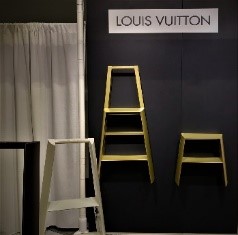

Lucano Step Stools
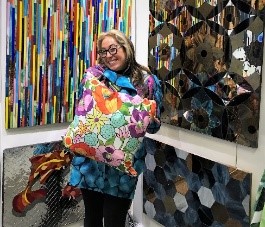
Allison Eden Studios
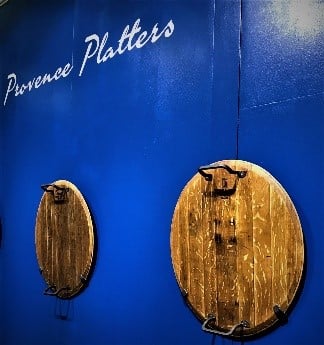
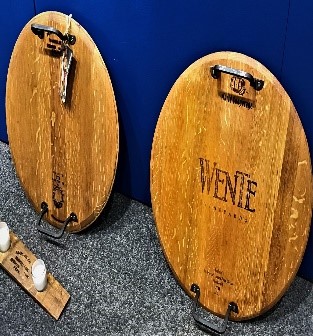
Provence Platters

ArtAddiction
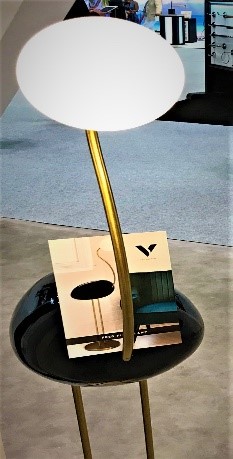
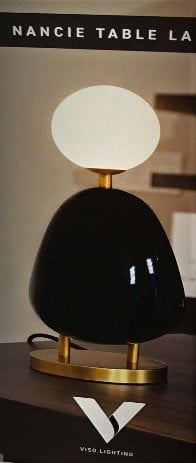
Visio Lighting

Marset Lighting
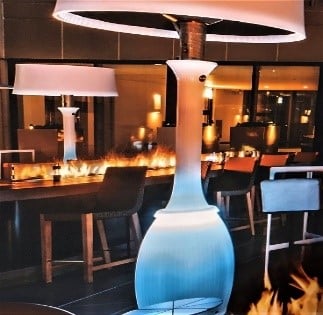
Kindle Glow
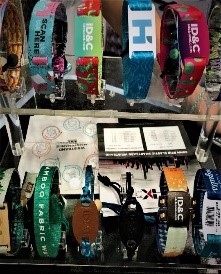
[email protected] Wristband

Carol Swedlow. Empire Collection. Aronson Floors
The event attracted designers, buyers, architects, hoteliers, and journalists.
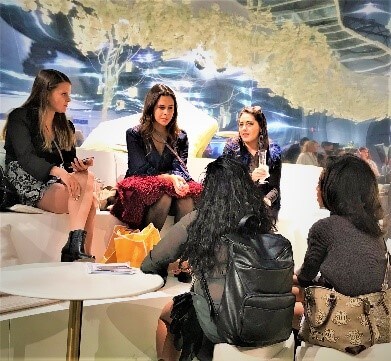


© Dr. Elinor Garely. This copyright article, including photos, may not be reproduced without written permission from the author.




















